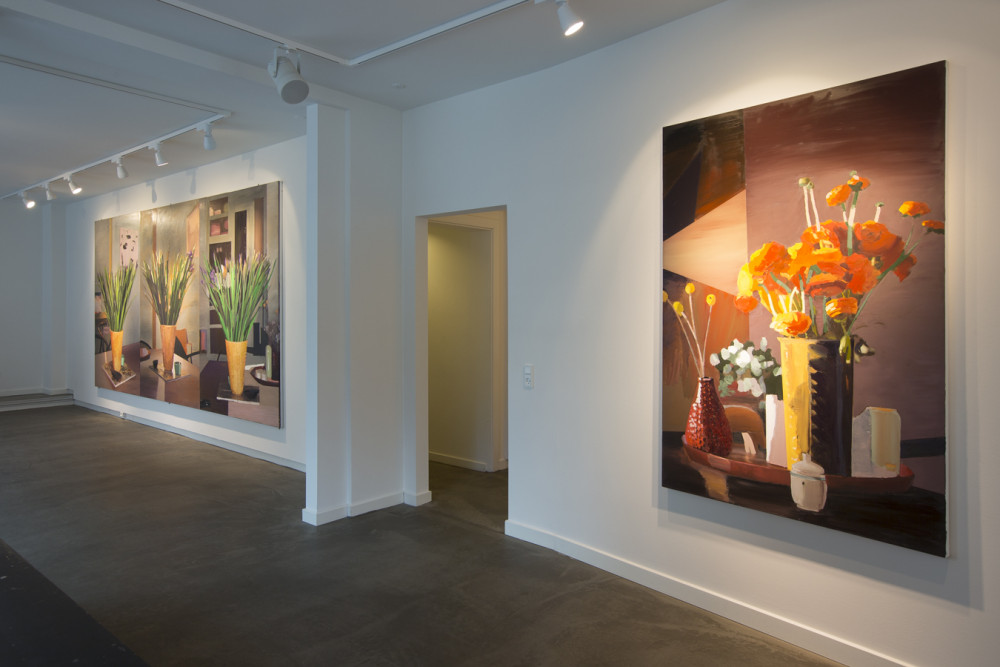Few artists move so effortlessly between materials and genres as Erik A. Frandsen. Ever since the “tray paintings” and his iconic “Home”, which was selected for Documenta IX in 1992 and subsequently purchased by the Danish National Museum of Art, SMK, hardly any material has been left untried: polished aluminium, neon, scagliola, marble mosaic, crocheting, glass, ceramics… A glance down the resumé of Erik A. Frandsen reveals unparalleled curiosity and daring that seems to forbid the boy from Randers to rest on his laurels.
Even so, it’s one thing in particular that most people associate with the prolific and versatile painter: His flowers. In fact, they’ve become so iconic to the painter’s oeuvre that they’ve been canonized as such; Frandsen’s flowers.
And rightly so. Because – in the most exemplary of fashions - Erik A. Frandsen has managed to reinvigorate the otherwise rather hackneyed concept of the still life. There is always a twist; an intangible unease in his compositions. Perhaps the beautiful roses have been placed in a urine bottle, or maybe the irises are starting to wither. Perhaps it’s actually weeds we’re seeing.
In New Works / Flower Angles, Erik A. Frandsen picks up, where he left off in ”The Siege of” from The Himmerland Museum of Art in 2016. Once again, Frandsen takes the viewer deep into the innermost sanctum, when flower compositions from his home in Copenhagen’s rowdy Nørrebro neighborhood or his refuge on the island of Falster are dissected and distorted through minute shifts in perspective and angle of attack.
And it is the latter exploration of the importance of angle to the motif that has given birth to the second title of the show: Flower Angles. It is about observing the same piece of reality from different angles; an almost obsessive exercise. And in turn this exercise results in a surprising gloominess you wouldn’t normally expect in the face of flowers. The foreground quivers, the home behind it expands and retracts. It is the idea of flowers, the notion of a home. And perhaps that uneasiness stems from exactly this: We recognize everything, but we’re still not entirely sure, what it is we’re seeing. The prosaic and well-known becomes mystical and poetic, once it is lifted out of its context and re-established in a new matter.
It is the unwavering exploration of this dialectic, which renders Frandsen’s oeuvre so sublime.
New Works / Flower Angles runs in parallel with the much-anticipated Haiti, which opens August 25 at Brandts Museum in Odense.




















